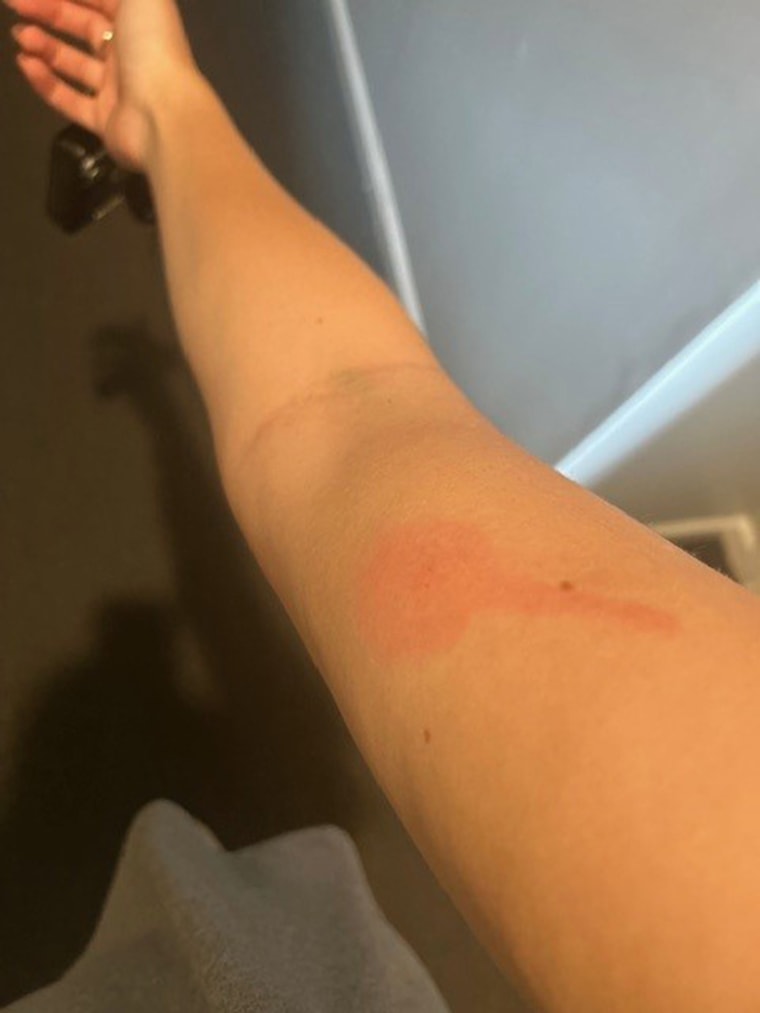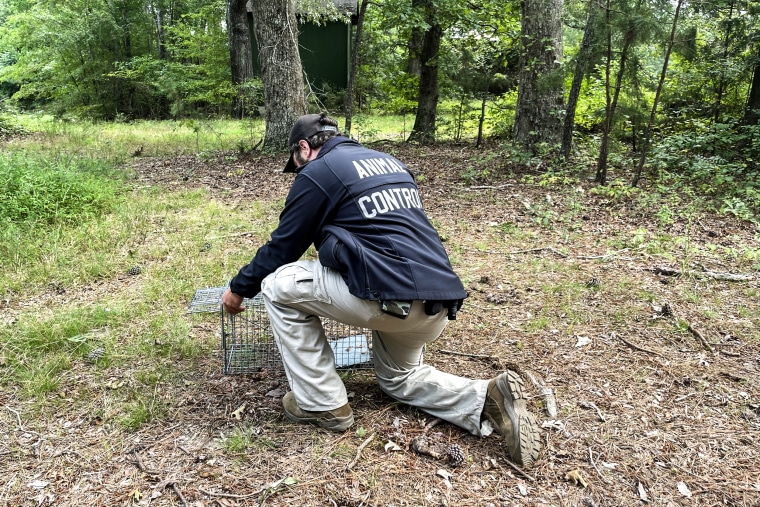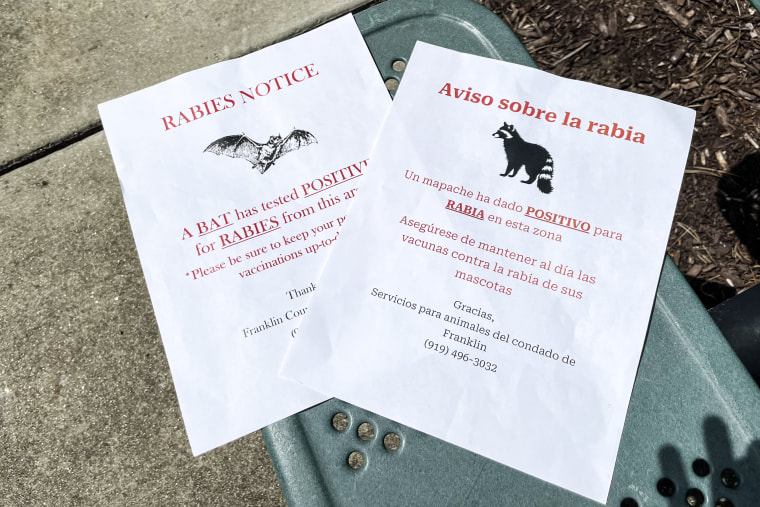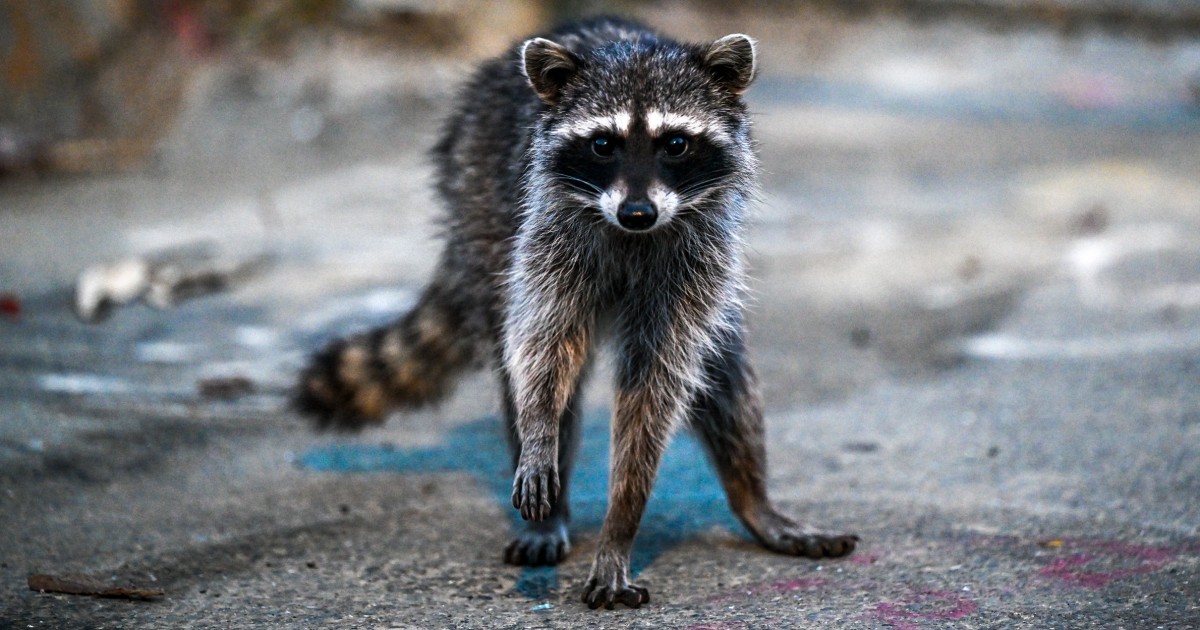Six deaths from rabies have been reported over the last 12 months in the U.S., the highest number in years, according to the Centers for Disease Control and Prevention. From rabid skunks in Kentucky to gray foxes in Arizona and raccoons on Long Island, wild animals in more than a dozen places across the U.S. have experienced a rise in the deadly disease, at least partly driven by shrinking natural habitats and better surveillance.
“We are currently tracking 15 different likely outbreaks,” said Dr. Ryan Wallace, who leads the rabies team at the Centers for Disease Control and Prevention. Areas with outbreaks include Nassau County, New York, which issued a health threat over rabid animals last month, as well as Cape Cod, Massachusetts, and parts of Alaska, Arizona, California, Indiana, Kentucky, Maine, North Carolina, Oregon and Vermont.
“There are parts of the United States where it does seem like we’re getting more calls and more reports,” Wallace said, noting an increase in rabid foxes in the West and rabid bats across the country. “Whether those numbers are truly significant increases, we can only tell at the end of the year. But right now, at peak rabies season, it does seem like activity is higher.”
Rabies is present in all states except Hawaii. Bats are the most common cause of rabies infection in people and are also the most likely species to be infected with the virus, according to the CDC.
Each year, 1.4 million Americans are checked for possible exposure to the rabies virus and 100,000 receive a series of vaccine injections to prevent them from becoming ill, according to the CDC.
Last month, Samantha Lang was one of them. Land, 22, was likely bitten by a bat that flew into her apartment from a hole in her ceiling in Greenwood, Indiana. The day after she noticed tiny marks on her arm, she discovered the bat, alive, hanging from her air conditioning vent. After contacting her local health department, she was urged to receive rabies post-exposure prophylaxis. She got it immediately.
“I never thought that I would have to worry about it,” Lang said.

The rabies virus invades the central nervous system and is almost always fatal once symptoms start. Early symptoms, which can begin about a week or up to a year after exposure, may resemble the flu and progress quickly to confusion, paralysis, salivating, hallucinations and difficulty swallowing, followed by death within weeks.
The number of human deaths over the last year is concerning, experts say. In comparison, from 2015 to 2024, 17 cases of human rabies were reported, two of which were contracted outside the U.S., according to the CDC.
People are most often exposed to the rabies virus through the saliva of an infected wild animal that can get into the mouth, eyes or a wound, which is why bites are so dangerous. Prior to the 1960s, most cases in humans were from infected pets, usually a dog. Thanks to strict pet vaccination laws, the canine strain of rabies has been eliminated from the U.S.
One of the more dramatic increases in wildlife infections has been in Franklin County, near the Research Triangle region of central North Carolina, which experienced a doubling of confirmed cases in wild animals over the past year.
“For the number of confirmed cases to go up 100%, and we’re not even over this year’s rabies season, that’s a big deal,” said Scott LaVigne, the county’s health director.
LaVigne suspects that the urban growth that’s been encroaching on wild animal habitats has been an important factor driving the spread of rabies.
“The population of Franklin County since 2010 has increased 35%, and those people have to live somewhere,” he said. “And so you’re seeing increased land development and housing tracts going in.”
Animals that might have been isolated before are now crowded together, and if one gets rabies, it’s more likely to spread to others in the group, LaVigne said.

People may not always know they’ve been exposed to a rabid animal. There have been reported deaths from people who didn’t realize they had been bitten or scratched by a bat and who had refused the lifesaving vaccines.
In December, a California teacher died a month after removing a bat from her classroom. She didn’t know she’d been infected.
The virus can evolve and manifest in different ways, depending on the animal species and the strain. Most people expect a rabid animal to be aggressive and vicious, but sometimes the infected animal can be quite docile.
“There’s a strain of rabies where the animals get very, very friendly,” LaVigne said. A “family saw a raccoon that kind of showed up on their front step and he was sick and he was so cute and wanted to be petted. And you know when raccoons aren’t barring their teeth they are pretty cute.”
The family petted and fed the animal until it died. They called animal services to pick up the body “and thank God they did, because when they sent the brain out to be tested, it was positive, and so the whole family had to get vaccinated,” LaVigne said. “Oh, my gosh, they never would have known if they hadn’t called animal services.”

Worries about vaccination rates in dogs
As rabies seems to be spreading more in wildlife, veterinarians are especially worried about vaccine hesitancy spreading among pet owners, a dangerous trend that could lead to more dogs — and their owners — becoming infected. A 2023 study published in the journal Vaccine found in a nationally representative sample of Americans that nearly 40% believed canine vaccines were unsafe and 37% believed that vaccines could lead their dogs to develop cognitive issues, such as autism.
Dr. Gabriella Motta, a veterinarian from Glenolden, Pennsylvania, and a co-author of the study, says she often sees clients who are concerned vaccines might hurt their dog.
“It’s an issue we’re worried about, that could be on the rise in the future,” Motta said. “If we continue to see plummeting vaccination rates or increasing vaccine hesitancy, are we going to see [rabies] in more pets, and not just wildlife? We’re kind of starting to sound the alarms.”
Rabies vaccines after exposure have come a long way since the shots were injected into people’s abdomens. The current series involves an injected dose of immunoglobulin, which contains rabies antibodies, immediately after exposure, followed by four vaccine injections. All the shots are now given in the arm.
The rule of thumb, experts say, is that rabies should be suspected any time a wild animal is behaving in an aberrant way, whether it’s too aggressive, too fearless or too friendly.








